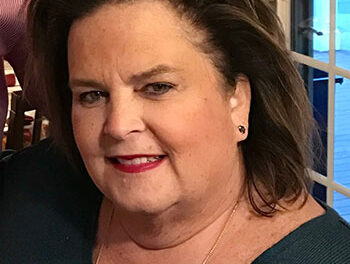By NEIL ZOLOT
WAKEFIELD – School officials are facing dwindling dollars amid growing demands in the district, the School Committee was told this week.
The proposed School Department budget for Fiscal Year 2025 is $52,319,699, a 5.5 percent increase over $50,090,191 allocated for the current fiscal year, which included $500,000 in American Rescue Plan Act funds not in the spending package now being hashed out.
“The Fiscal 2024 School Committee budget was reduced from both ARPA funding from the Town and revolving account offsets,” reads a presentation given to the School Committee at their meeting Tuesday, March 12. “The Fiscal 2025 budget includes $100,000 from ARPA from the Town and $325,000 from revolving account offsets.”
The Fiscal 2024 budget was 5.22% ($2,483,114) higher than the Fiscal 2023 budget of $47,607,077.
A public hearing on the schools’ spending plan for the next academic year will be held at 6:30 p.m. next Wednesday, March 20. It will be held via Zoom, and the hearing link will be posted on the Wakefield Public Schools website. A copy of the proposed budget is available for review in the Superintendent’s Office, 60 Farm St., and on-line at www.wakefieldpublicschools.org
In Fiscal 2025 personnel costs, i.e. salaries, will rise from $42,057,630 to $44,082,014, after negotiations for a new teacher contract that includes a 3.5% cost of living increase. Contractual Services will rise from $6,032,914 to $6,221,011 and Materials and Supplies from $1,999,647 to $2,016,674.
“Demands are outstripping resources,” Superintendent Doug Lyons pointed out.
Another factor is an increase in the number of students. There will be 60 (1.7%) more, rising from 3,371 in Fiscal 2024 to 3,431 in Fiscal 2025.
All this increases the Foundation Budget and Net School Spending or minimum spending requirements for the district and the minimum requirement for a municipality’s share of school costs $1,797,191 (4.1%) from $43,061,535 to $44,858,726. The Required District Contribution will rise $1,696,421 (4.9%) from $34,517,798 to $36,214,219, while Chapter 70 state aid is rising only 1.2% ($100,770) from $8,543,737 to $8,644,507.
“Chapter 70 will go up, but not as much as it should be,” Lyons feels.
An increase in the number of Multi-Language Learners, formerly classified as English as a Second Language or English as a Learned Language students, has increased within the overall population, but it goes beyond simple math.
“The needs are not only in the numbers, but needs within the numbers,” Assistant Superintendent Kara Mauro explained. “We’re trying to make sure the programs are of high quality and there are complexities to think about,” a reference to increases in the number of languages of students and varying levels of education among the new students.
Title 3 aid is available, but Lyons cautioned, “It’s a minimal amount with a lot of limitations.”
Out-of-District placement tuition costs for Special Education students is also expected to rise, which must be weighed against increases in In-District programs, while Circuit Breaker Special Education aid is increasing only 4.7% as opposed to 14% in Fiscal 2024.
“You have to spend money to save money,” Business Administrator Christine Bufagna said. “We’re building programs to keep students in the system and don’t want to undo what we’ve built.”
No positions have been added. “If there are greater needs, our plan is to reconstitute the system from within,” Lyons said. “We’d need to look at how we’re managing caseloads rather than jump into having new positions.”
Hiring or reconfiguring staff is easier at larger schools. “There’s more flexibility in people taking on larger roles at a larger school like Dolbeare Elementary,” Lyons pointed out. “Hiring fractional increments of work, like half time positions, are difficult in our smaller schools.”
“Having more people isn’t always better, especially if you don’t have good systems in place,” Mauro added. “There are some holes in the system we’re working on.”
Longer term challenges include space for pre-K children and the need to cool buildings in a changing climate. “Pre-K is thriving, but we had to turn away students,” Lyons reported. “We’re required to provide support for early intervention pre-K students. The more we can, the better they’re able to hit the ground running in Kindergarten.
“There’s no air conditioning at Greenwood. With the way the climate is going, we’ll need to meet expectations; buildings will need to be cooled. It’s about creating sustainable budgets and highlights the need to think differently.”





